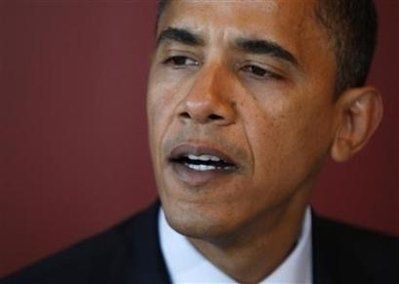
Over at USA Today's "On Politics" blog, stories about polls come stamped with the following disclaimer: "WARNING! Polls are snapshots of public opinion, not forecasts of far-off election days." It's a noble standard, but sadly, one that is not met by the paper's latest poll, a joint effort with the Gallup firm.
As the Huffington Post reported Monday, the Gallup/USA Today poll's results among "likely voters" raised more questions than they answered. By showing a lead for McCain that contradicted Gallup's own independent tracking results, the poll prompted Emory University political scientist Alan Abramowitz to ask how Gallup and USA Today selected the "likely voters" who purportedly now favor the Arizona Republican. While the answer to that methodological question (and several others) remains a bit murky, USA Today's full writeup in Tuesday's dead-tree edition offers a few more details -- and one other nugget of information that should drive skepticism of their results through the roof.
As for how "likely voters" were identified, USA Today reports that respondents were asked "how much thought they had given the election, how often they voted in the past and whether they plan to vote this fall." Fair enough. But the very next sentence raises even more questions about whether USA Today's effort is actually a snapshot of the electorate, as its website claims, or enters the realm of forward-looking hypothesizing. Buried in the ninth paragraph of USA Today's own writeup, they reveal that "McCain's gains came because there was an even number of likely voters from each party. Last month, the Democrats had an 11-point edge."
Abramowitz says this contradiction is the equivalent of polling malpractice. "It is simply not plausible that there would be an 11-point swing in party ID among likely voters or that there is now an even split in the likely electorate between Republicans and Democrats," he wrote in an email to the Huffington Post.
And on MSNBC this morning, Chuck Todd sounded off on the "likely voter" results:
"[Frank] Newport, editor of Gallup, a good pollster ... even has a warning in USA Today this morning that says don't believe the likely voter, follow the registered voter model. They report it anyway. ... But the point is, is that this is -- a good polling organization like Gallup, okay, these guys are in control of the gold standard of polling. They can't figure it out. I think this is a warning to everybody that polling this year is very difficult. ... Everything should be taken with a grain of salt."
But grains of salt aside, there is other evidence to suggest that USA Today's "likely voter" poll runs afoul of its own standards in terms of not forecasting far-off election results. In describing the poll's usefulness on MSNBC Tuesday morning, Gallup chief Frank Newport said "it's important to look at likely voters ... just to see under a scenario where McCain supporters are energized."
So sure, "under a scenario" where McCain's voters are energized at a level equal to Obama's and the national distribution of party ID is equal between Democrats and Republicans, perhaps it would make sense to see McCain with a four-point lead in a poll with a plus/minus 4 percent margin of error. But engineering coverage of a poll with metrics contrived to show results under a certain "scenario" sounds more prospective and hypothetical than the paper's stated mission of covering polls as momentary snapshots and "not forecasts of far-off election days."
As Newport said on MSNBC this morning: "The likely voters simply tell us that turnout could make a difference."